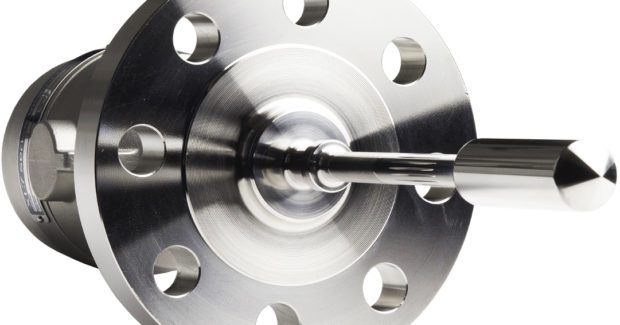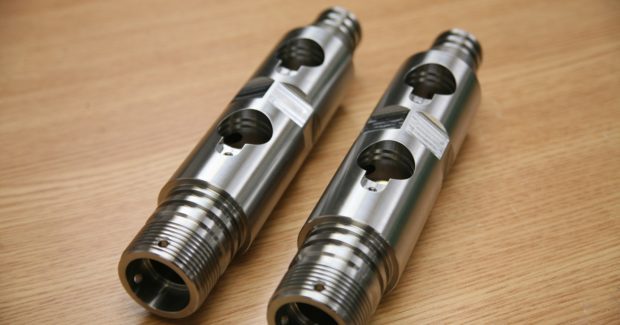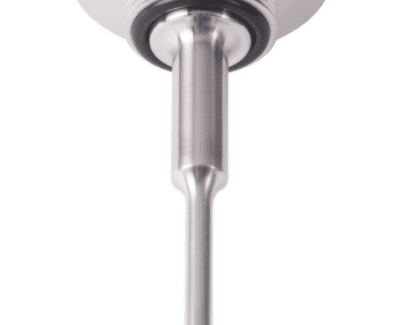Making Step Changes in Productivity
Take a closer look at how these two British suppliers to the oil and gas industry are investing in advanced machining technologies to speed up production, reduce operating costs, ensure higher part quality, and future-proof their manufacturing capabilities to further increase the confidence of their customers.
Posted: January 25, 2017
ONE-OFF PROTOTYPES, HIGH VOLUME COMPLEX PARTS
Even though Apogee Industries Ltd. (Pewsey, England) has been growing organically for ten years at the rate of 15 percent to 25 percent per year, they recently made a step change in productivity when they installed an NTX 1000 2nd Generation mill-turn center from DMG MORI UK (Coventry, England) in their factory at Pewsey to produce complex parts for the oil and gas industry, along with other components for aerospace, motorsport and defense applications. “We produce components for companies around the world, working in partnership with them to develop a lean and efficiently manufactured product,” said William Chappel, the director of Apogee Industries. “In every case we must achieve high quality and accuracy, whether it is a single one-off prototype or a production run of thousands.”
The shop previously utilized 4-axis machining centers and driven-tooled turning centers, together with a high level of engineering input, to build a reputation for making complex, intricate and high tolerance parts to an exceptionally high standard in exotic materials. However, that methodology required numerous set ups and many custom fixtures, which took a considerable amount of time and skill. “Many of the parts required between four and nine setups, along with the associated jigs and fixtures for each operation,” explained Chappel. “The result was an unacceptably low level of overall spindle run time that offered us very little optimization and resulted in limited output. With this new mill-turn center, we increased productivity with additional up time of 70 percent.”
The acquisition of a laser cutting machine at their second factory helped Apogee to realize that automation and advanced production methods could help their growth and enable them to fulfil customer requirements while keeping all aspects of their production in-house. In one instance, a part that would normally be machined from solid billet was laser profiled first, before being machined to its final specification. This not only reduced material waste but also dramatically reduced the production time of each part, leading to cost savings and lead time improvement. Applying this experience to machining helped the company to understand the improvements they would gain from investing in the NTX 1000 2nd Generation.
“The new mill-turn center replaced four ageing machines and dramatically increased spindle run time,” noted Chappel. “This is where we gain critical revenue to invest in new equipment. The NTX1000 2nd Generation is scheduled to run our monthly batch requirements through the evenings while the small quantities of complex jobs can be watched and manned during the daytime. In addition to the extra machining time, savings are made on maintenance, associated running costs and duplication of tooling packages.”
This mill-turn center provides 65 mm (an option they chose) through-bar capacity and can throw a 430 mm diameter by 800 mm long billet. It is also equipped with a B-axis head rated at 20,000 rpm (another option), and a 10-station lower turret with a built-in motor giving 10,000 rpm. Due to the machine’s unique capabilities, the shop brought a number of machining processes in-house that they would normally subcontract, from gear cutting, broaching keyways and splines to deep hole drilling and a limited amount of gun drilling, thanks to the 7.0 MPa coolant pressure. The automation comes from the addition of a bar feed and in-machine traveling workpiece unloader that allows the shop to run the machine lights out and unattended, without an operator having to handle components mid-production – a gain of an extra 60 percent of production per week.
To ensure quality, repeatability and reliability the machine is fitted with linear scales, a Renishaw probe and tool breakage detection. This allows the shop to probe in cycle, validate the parts, and update tool offsets automatically before removal from the machining cycle. The advanced systems can also switch to sister tooling if needed and ensure that parts are rejected if there is a tool failure. “British manufacturing is based upon high technology,” noted Chappel. “As a company we should always strive to invest in the latest equipment to increase efficiency, productivity and overall value for our customer, which predominately leads to an advanced and automated manufacturing space. The NTX 1000 2nd Generation is the start of this transformation for us.”
Fitted with the intuitive CELOS® applications-based interface, the new mill-turn center integrates well with Apogee’s existing job management system. The company also uses the CELOS PC version to provide their engineers with access to drawings, images of the setup and notes, and to schedule jobs from the office. “CELOS is very important to us because we work in a dynamic environment where we have to respond very quickly to our customers’ needs and requests,” said Chappel. “It enables us to rapidly re-tool and setup for repeat jobs. Previously we had to take immense care on the multiple setups, produce spare parts for each operation and endure an overly high scrappage rate but, with the NTX 1000 2nd Generation, the requirements for jigs and fixtures have been effectively removed and we have the ability to manufacture the precise amount of components required.”
Because the mill-turn center is loaded with a full production schedule of on-going projects, reliability and service are of paramount importance. For this reason, the shop reports that the transparency in DMG MORI service and repair times, along with the build quality and precision characteristics of the machine tool itself, have been very reassuring.
AN F1 SENSIBILITY IN VISCOMETER MANUFACTURING
Hydramotion Ltd. (Malton, England) has been leading the field in viscosity measurement in the oil and gas industry for nearly 30 years. Their true on-line viscometers are designed for continuous use without intervention in extremes of temperature, pressure, flow and viscosity, and are used widely for the measurement of crude oil and all its refined fractions, either as part of the refinement processes or end products. Their series of patents for high precision instruments have revolutionized in-line and in-process viscosity measurement in oil and gas applications.
“We want to develop our engineering and introduce a philosophy with an F1 sensibility,” said John Gallagher, the managing director of Hydramotion. He is proud of the rigorous scientific development that goes into their continuously evolving products and he wants to apply the same approach to their manufacturing process. “We already use CFD software in product development, CAD for design and CAM for CNC program generation,” he adds. “The next step was to enhance high performance machining to speed up production, ensure our products are of the highest quality, future-proof our manufacturing and enhance the confidence our customers have in our capabilities.”
To meet these requirements, the company invested in two CNC universal lathes from DMG MORI: an NLX 2000 | 500 and a CTX beta 800. “On a technical level, these lathes met our requirements with a second spindle on the NLX 2000 | 500 and a programmable travelling steady rest on the CTX beta 800,” explained Gallagher. Parts that previously required four operations can now be done in two setups on the NLX 2000 | 500 lathe thanks to its second spindle, while the traveling programmable steady rest on the CTX beta 800 lathe enables parts as small as 8.7 mm diameter and up to 850 mm long to be turned without any part flexing during machining.
“Additionally, we wanted visibility from the investment,” added Gallagher. “The aesthetic appearance of the machines is well done, as is their CELOS interface.” So the company also invested in an 8,000 sq ft extension for these new lathes that joins to their existing factory and provides a seamlessly connected production facility, both physically and electronically. “By connecting our design, development and manufacturing together we can speed up development and production,” continued Gallagher. “Feeding back improvements in machining capabilities to the design phase will, in turn, lead to product enhancements. Our customers are highly international, and the investments we have made and the high technology philosophy which we are pursuing will definitely be appreciated.”
The nature of the viscometers is that they are designed to vibrate, so the rigidity of the new lathes and the way in which the parts can be manipulated and supported during manufacture is crucial to the quality of finish on each part. “These new lathes easily work within the tolerances we need to achieve,” noted Richard Bielby, the team leader of the production center at Hydramotion. “However, the big advantages are the quality of the surface finish and the lack of blend marks that we used to have from turning parts in sections. Previously, this required a significant amount of polishing to achieve the desired mirror finish. Now this finishing task is at least 50 percent faster.”
Previously, it was very time consuming with all the different operations to produce a batch of 30 parts. Now it is extremely simple and highly repeatable, thanks to the tool setting in the machines, the use of standardized tooling, the reduction in operations and the smooth vibration free operation of the machines. “We use various corrosion resistant materials which are difficult to machine,” explains Bielby. “These new lathes cut these materials with ease, giving us increased tool life of around 25 percent and halving the time to manufacture parts. Furthermore, the CELOS interface on both lathes enables us to program parts on the machine if we want to, look up setup sheets, simulate the toolpath, and examine CAM data, models and drawings of the part. This minimizes our chance of error by utilizing a paperless environment.”
Apogee Industries Ltd., Unit 20, Salisbury Road Business Park, Pewsey, Wiltshire, England SN9 5PZ, +44 (0) 1672 5646 09, Fax: +44 (0) 1672 5632 75, sales@apogeei.co.uk, www.apogeei.co.uk.
Hydramotion Ltd., 1 York Road Business Park, Malton, York, England YO17 6YA, +44 (0) 1653 6002 94, Fax: +44 (0) 1653 6934 46, sales@hydramotion.com, hydramotion.com.
DMG MORI UK, 4030 Siskin Parkway East, Middlemarch Business Park, Coventry, England, CV4 4PE, +44 2476 5161 37, Fax: +44 2476 5161 36, www.dmgmori.com.













